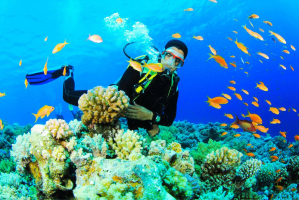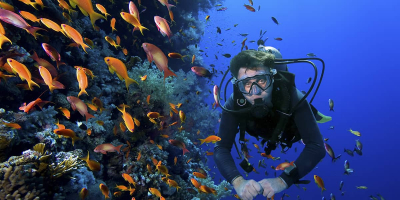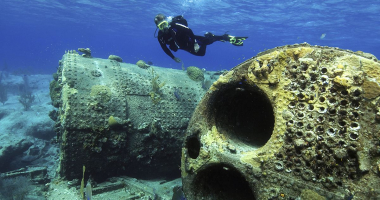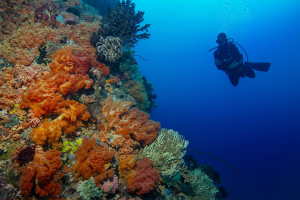Top 10 Best Dive Sites in Dominican Republic
The best islands near the Dominican Republic are split between the popular southwest coast and the lesser-visited northeast coast, close to the border with ... read more...Haiti. If you're looking for a fun day of beach fun, with enough facilities to keep the family happy, then head to the southern islands. Whereas, if you're looking for more rugged adventures, consider Dominican Republic's northern coast islands. No matter which island you choose to dive, you will be treated to tropical beauty and crystal-clear Caribbean water. Let's explore the list of the best dive sites in Dominican Republic.
-
Boca Chica ranks 1st on the list of the best dive sites in Dominican Republic. It is a municipality of the Santo Domingo province in the Dominican Republic. Within the underwater national park, these two wrecks are near together. The Hickory is a 144-foot-long (44-meter) freighter that is currently lying on a shallow flat sandy floor. The Limon, on the other hand, is a 70-foot (21-meter) tugboat that was sunk among coral reefs specifically for diving.
In Boca Chica, both wrecks have attracted a lot of marine life, and you can swim about and look at the sponges and encrusting corals that have taken over their bones. There are also many tropical reef fish in the wreck, including sergeant fish, butterflyfish, batfish, and rare lionfish. Diving conditions are good all year round but you still need to be careful which time of year you decide to visit. From July to November, hurricanes can hit the region while winter sees faster and stronger winds. When it comes to sea life, you are truly spoiled. You will be able to feast your eyes upon turtles, sharks, eels, and eagle rays, and enjoy the bustling life of the region’s healthy, magnificent reefs.
Location: Santo Domingo, Dominican Republic.

nautilusliveaboards.com 
tripsavvy.com -
Paradise Island ranks 2nd on the list of the best dive sites in Dominican Republic. Paradise Island, whose real name is Cayo Paraiso or Cayo Arena, is a coral islet located in the Northwest of the Dominican Republic off the coast of Puerto Plata in Punta Rucia. Of incredible beauty, this little island is plunged into such a beautiful landscape that people think they are in a dream. This sandy bank that is frequently visited by hundreds of tourists, is a jewel of nature, a true paradise of the Caribbean. It is difficult to tell them the size of this cay because it shrinks and expands depending on the seasons of the sea currents.
After 45 minutes of enjoying this unforgettable boardwalk aboard the boats, you will finally dock at Paradise Island and you will be fascinated by the beauty of this piece of sand nestled on the coasts of the Dominican Republic. Many species of fish of all colors, take photos, take a refreshing dip in their crystal clear waters, talk to the fishermen who come to the island or lie down on the fine sands.
Location: Punta Rucia, Dominican Republic.

unep.org 
treehugger.com -
Enriquillo Shipwreck ranks 3rd on the list of the best dive sites in Dominican Republic. For wreck dive enthusiasts and history buffs, the Enriquillo Shipwreck is a must-visit. One of the marine-protected dive sites in Playa Blanca, the Enriquillo RM22 sits at a depth of 60 feet (18 meters) and is home to an impressive number of Caribbean fish species. The ship was donated to the Dominican Navy by the United States in the early 80s. After more than two decades in service, in 2006 it was sunk off the eastern coast of Punta Cana as an artificial reef.
The Enriquillo has a long and interesting history dating back to World War II, it was built in 1944 as ATA-193 and served during the Battle of Okinawa in 1945. The Dominican Navy renamed it Enriquillo in memory of the Taino Leader that rebelled against the Spanish invasion in the 16th Century. Today Enriquillo wreck is home to large schools of yellowtail snappers, horse mackerel, and sea breams. Divers can also observe hawksbill, leatherback turtles, green sea turtles, and large southern stingrays to name a few. Due to its unique history, marine protection status, and diverse marine life that call it home, Enriquillo made the list as the top wreck dive in Dominican Republic.
Location: Playa Blanca, Dominican Republic.

seaprodivers.com 
seaprodivers.com -
Playa Blanca ranks 4th on the list of the best dive sites in Dominican Republic. The aquarium is a protected dive site teaming hundred of Caribbean fish including snapper, blue striped grunt, and sea breams. With a maximum depth of 10m/33ft, the Aquarium is excellent for divers of all experience levels and offers advanced divers the option to explore various swim-through caverns. As a protected dive site, divers will be able to visit the coral restoration projects and see how critical coral species are replanted back to the surrounding reefs. If lucky, you might just meet Francoise, the resident barracuda swimming through with a large school of small sennets. Divers interested in exploring the Aquarium can visit the protected dive sites along the eastern coast of the island during an eco dive trip to Playa Blanca.
Avoid standing on reefs, picking up starfish or other live animals (including coral), and stay at least five feet away—even nearby recreational activities such as snorkeling and diving can stir up sediments and smother coral. When engaging in such activities, it's best to swim with a buddy, keep your distance, and be mindful of your buoyancy and fins while enjoying the underwater scenery.
Location: Punta Cana, Dominican Republic

laclinicsv.com 
uploadcomet.com -
Saona Island might be a popular destination for divers, however, it is the reefs surrounding the National Park of the East that are an unexpected surprise for many underwater lovers. Although lesser-known, the Penon reef made the list for its superb coral formation and diversity of marine life. Visit Saona Island more than once and you’ll still be impressed as every visit will involve new underwater encounters. The home of a large spotted moray eel, who frequently peeps out to greet visitors. Glowing squid, scorpionfish, stingrays, and giant pufferfish are a few of the species often spotted at Saona. If you are lucky, you might even come across one of the more prominent local residents of the East National Park: docile Manatees. A Scuba Diving Excursion to Saona Island is the best way to experience all that the East National Park offers, including Penon Dive Site, the Natural Lagoon, and Saona Island.
The national park on the Eastern Southern coast of the Dominican Republic is home to an extraordinary variety of wildlife and thriving corals. Penon reef is lesser known than other reefs in the area, however, its healthy coral formations and the sheer volume of life have made it one of the best dive spots in the country. The name “Saona” means rock and comes from the large number of rocks covering the side walls. Apart from the spotted moray eel, you will also see large amounts of reef fish swirling around the colorful reef. If you are lucky, you might be able to spot some glowing calamari, hidden away scorpionfish, and stingrays cruising through the blue.
Location: La Altagracia, Dominican Republic
Area: 110 km²

traveldiagram.com 
hakaimagazine.com -
Puerto Plata, officially known as San Felipe de Puerto Plata, is the third-largest city in the Dominican Republic, and capital of the province of Puerto Plata. For divers who enjoy the thrill of descending off a vertical façade into the depths, a Wall dive is an experience like no other! The Airport Wall, although lesser-known, is an excellent wall dive for advanced divers. Located on the northern coast, as the name states, this striking coral wall is located right by Puerto Plata International Airport. With depths of 35 meters, divers can experience a flowing sensation that is unexpectedly relaxing and exhilarating, during descent along the wall. One of the unique aspects of the Airport Wall is the swimming through caverns and tunnels found within the wall where eagle rays and reef sharks often hide.
Ocean World is an adventure park located amidst the reefs of the Beach of Cofresí, boasting the largest man-made dolphin habitat in the world. The park is the main tourist attraction and is the largest and most complete park of its kind in the Caribbean. From home decor to handmade jewelry, corals have long been popular as souvenirs. Many consumers, however, are unaware that these beautiful structures are made by living creatures. Souvenirs such as bleached corals, conch shells, starfish, sand dollars, and other popular ocean decorations, can promote the premature deforestation of reefs. When browsing through the airport gift store, refusing to purchase these products can drive the market to no longer invest in these items.
Location: Puerto Plata, Dominican Republic
Area: 509.01 km2

thetimes.co.uk 
forevervacation.com -
Catalina Island ranks 7th on the list of the best dive sites in Dominican Republic. Located 8 kilometers off the southern coast of the Dominican Republic, Catalina is a haven for Caribbean fish species. Although ‘the Wall’ is widely advertised as the real charm beneath the surface, it is the Aquarium Reef that is home to an impressive array of Caribbean fish. At an average depth of 40 feet, the Aquarium is home to stingrays, pufferfish, yellow trumpet fish, angelfish, and barracudas. Divers interested in Scuba Diving at Catalina Island will be able to organize a full-day trip to the island where they can explore the dive sites but also relax at one of Catalina’s quiet beaches.
Catalina Island is only 9.6 square kilometers in size and it is diverse preservation of eco-systems including sand dunes, mangroves, and reefs. Formed out of coral stone, the island contains three overlapping plateaus. The highest elevation on the island is only 60 feet above sea level. The seas around the Island are rich in wildlife, with many species of birds and tropical marine fish, and there are large areas where natural sandbars offshore bring the depth to just a few feet.
Location: Catalina Island, Dominican Republic
Area: 9.6 km2

seaprodivers.com 
seaprodivers.com -
Around the Juan Dolio, which is noted for its resort towns and lovely beaches, there are several diving spots. For keen divers, Tunnel Reef offers some of the nicest corals, although an Advanced certification is necessary. Otherwise, local diving operators provide beginner, intermediate, and expert dives, as well as snorkeling cruises. Simply select whether you want to view wrecks, caverns, or spectacular coral reefs.
Impressive rock formations are what this area of the Dominican Republic is known for, with Tunnel Reef being one of the dive sites featuring extraordinary rock formations and tunnels. Advanced divers will enjoy exploring this area, and swimming through the fascinating topography in this underwater world. The rock formations make a vast and diverse habitat for many marine creatures. If you bring your flashlight, you will be able to see into the cracks and crevices where invertebrates hide during the daytime. There are also plenty of turtles who swim around this reef, and if you are lucky, you will see some other megafauna cruising by.
Location: Juan Dolio, Dominican Republic
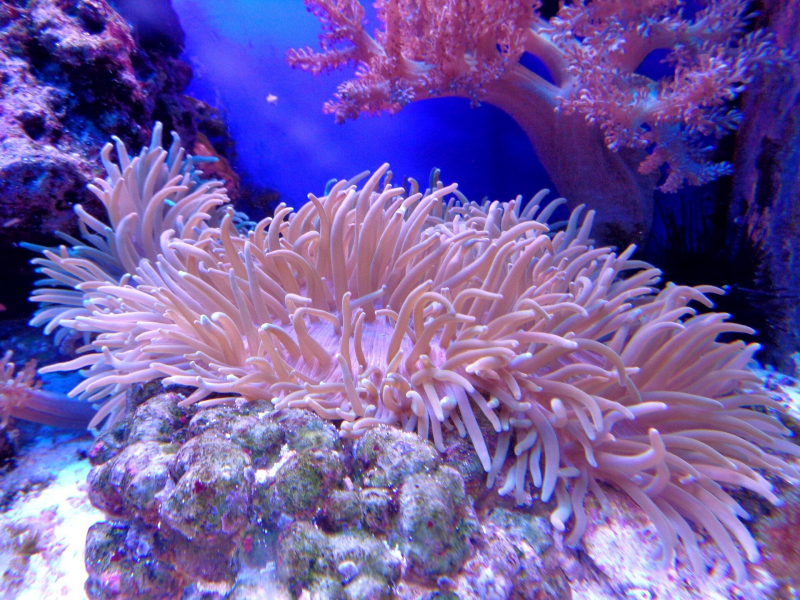
iaslinks.org 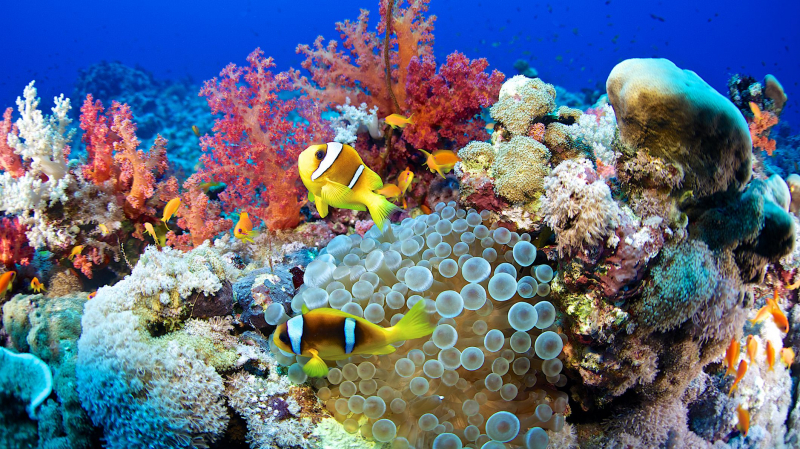
treehugger.com -
Punta Cana is one of the best dive sites in Dominican Republic. It is a resort town in the easternmost region of the Dominican Republic. It is part of the Veron–Punta Cana municipal district, in the Higüey municipality of La Altagracia Province. The area is known for its white-sand beaches, blue turquoise waters, and balnearios which face both the Caribbean Sea and the Atlantic Ocean. The weather is hot for most of the year, especially in late summer and autumn when the Northern Tropics receive their most direct sunlight.
Because of its location in the Caribbean Sea, diving is one of the tourist activities. The marine area surrounding Punta Cana was declared a marine reserve in 2012. Using reef-safe sunscreens that don't contain oxybenzone, avobenzone, or octinoxate is key to the survival of healthy reefs. Zinc or titanium zinc oxide are the only ingredients not harmful to corals, despite what the packaging containing those other harmful ingredients might say. In Punta Cana, tourists can go spearfishing or take the PADI Invasive Lionfish Tracker Specialty Course to learn about how these Pacific Ocean invasive species compete with local Atlantic reef fish for survival—a great example of how tourism and conservation can work hand-in-hand to save the reef.
Location: La Altagracia, Dominican Republic
Area: 475,3 km²

nbcnews.com 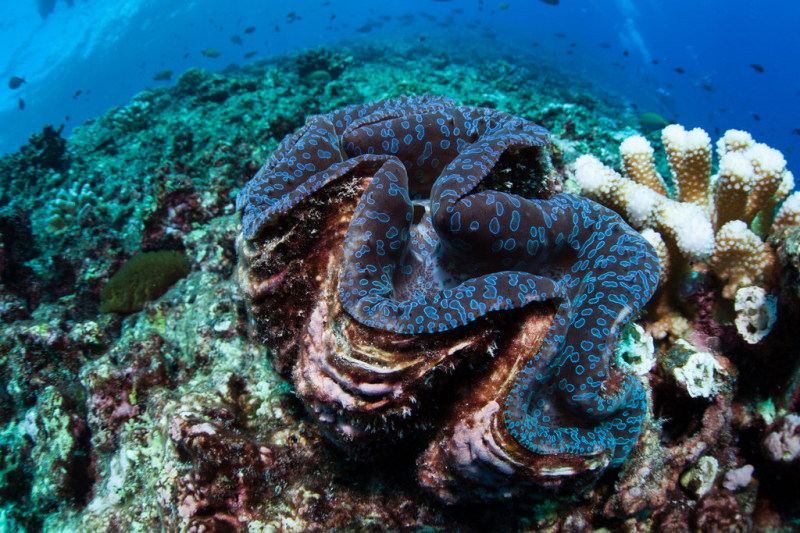
nytimes.com -
La Romana ranks 10th on the list of the best dive sites in Dominican Republic. If you get seasick, then maybe this is the ideal destination for you as La Romana is known to have the calmest waters in the Dominican Republic. From here you also have access to Catalina and Saona Islands which have beautiful fringing reefs, wrecks, and an abundance of marine life.
In La Romana, These coral reefs are teeming with life, and you can expect to see everything from surgeonfish, butterflyfish, needlefish, camouflaged scorpionfish, and more. Above the coral reefs, four of the seven species of marine turtles can be spotted including the leatherback, loggerhead, hawksbill, and green turtle! On your journey to and from the dive sites, keep your eyes peeled for whales and dolphins, as some are curious and come up to the boat to say hello. Along with the usual suspects of pufferfish, yellow trumpet fish, angelfish, and a variety of other reef fish. You can spot stingrays and massive schools of barracudas gathering around this dive site.
Location: La Romana Province, Dominican Republic.

thegioihomnay.net 
globalcitizen.org














